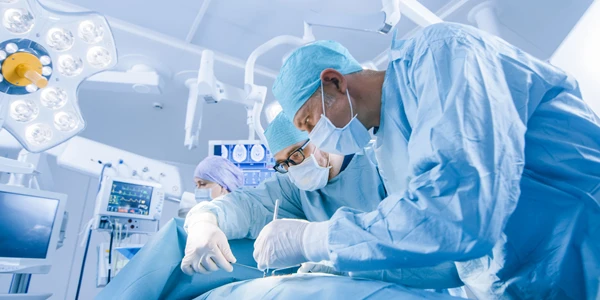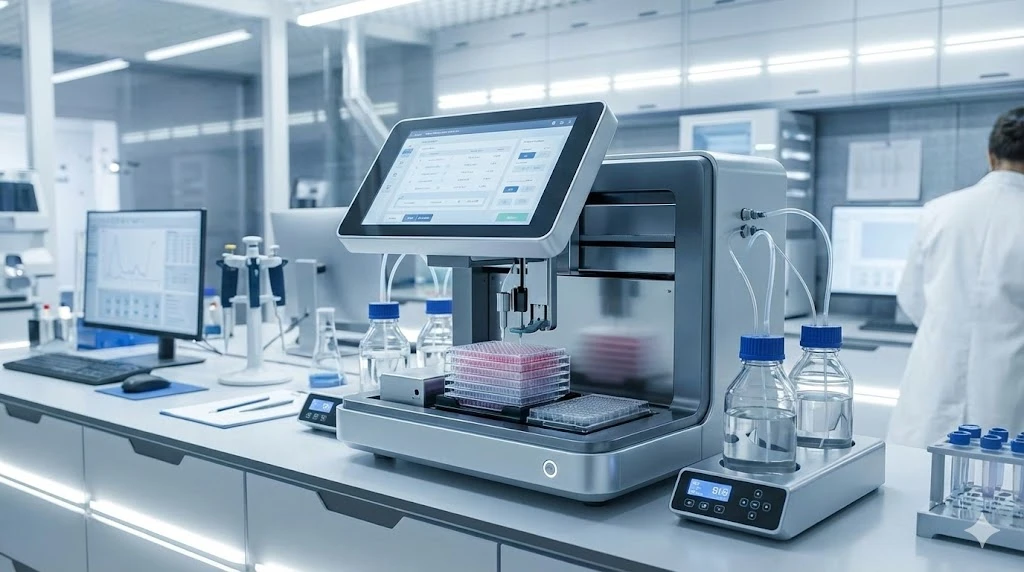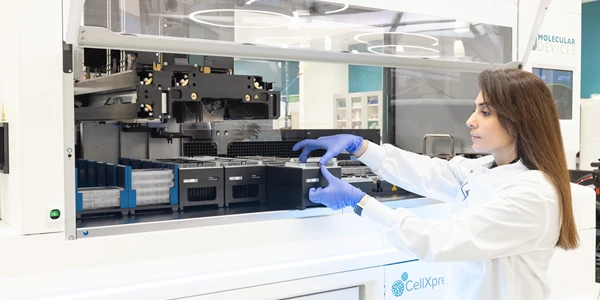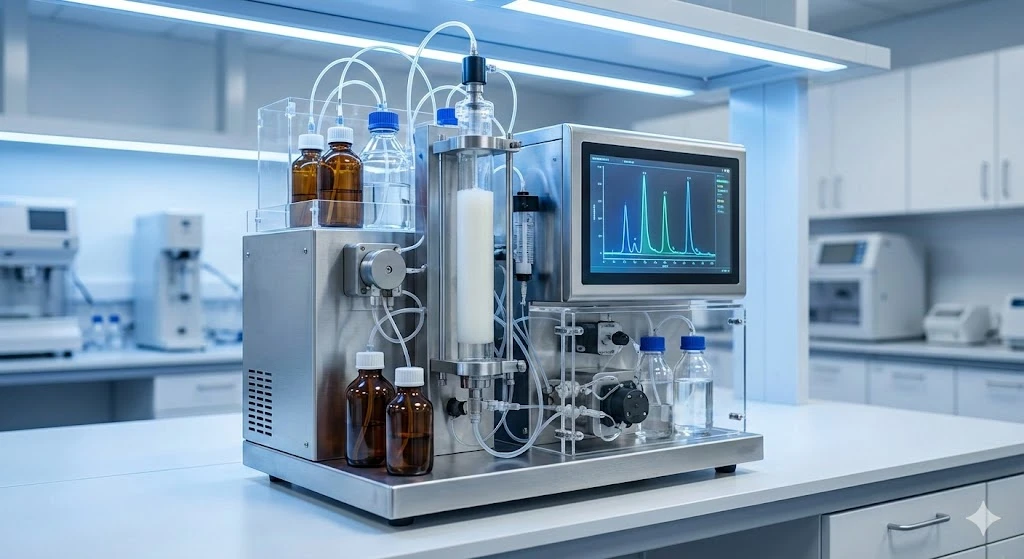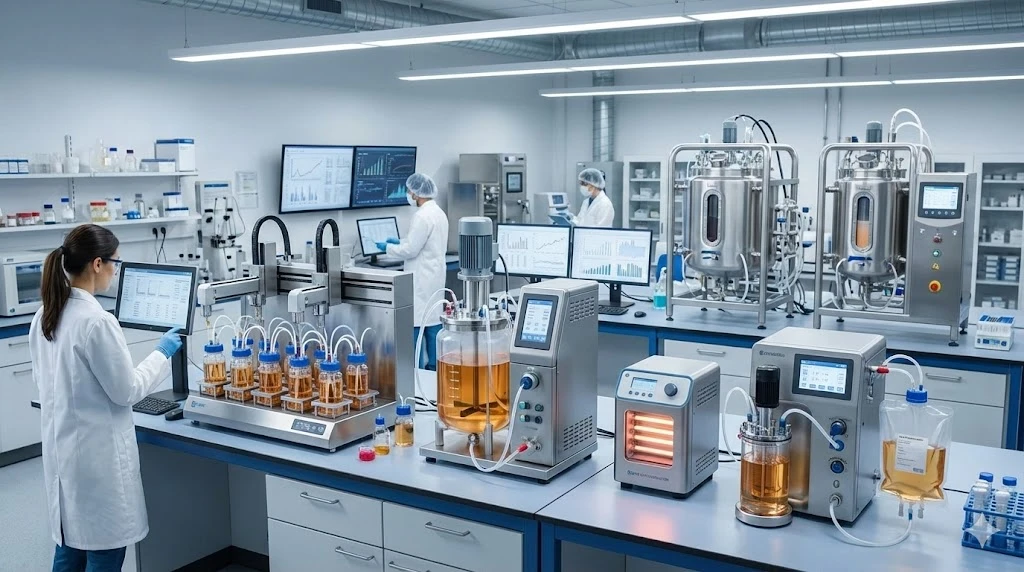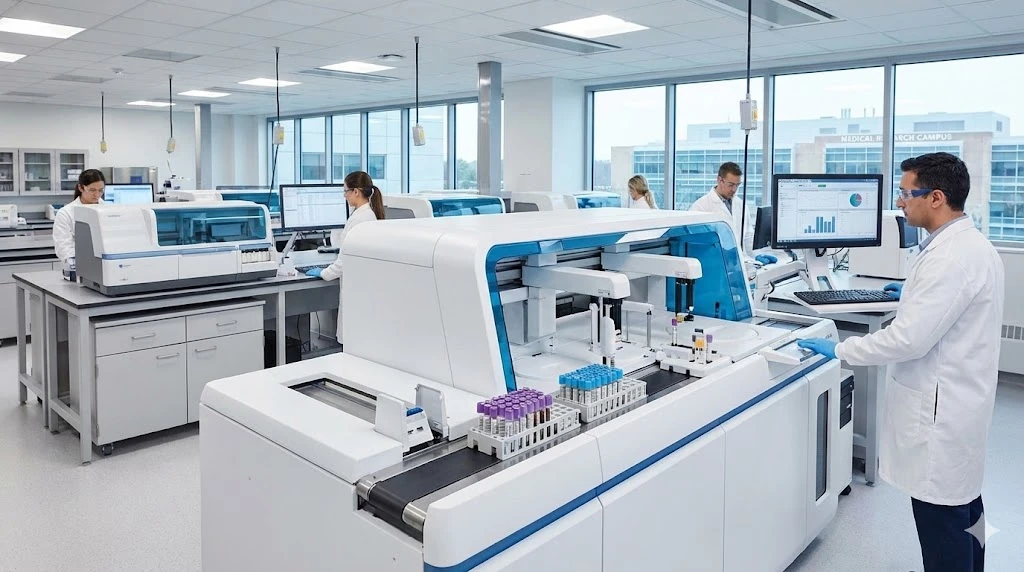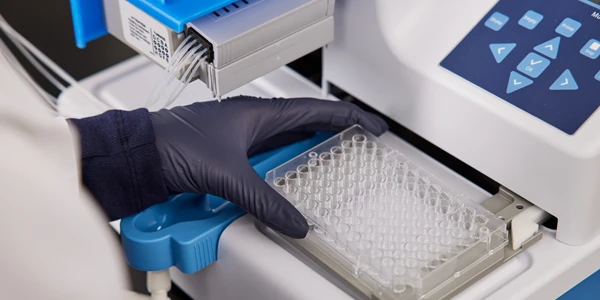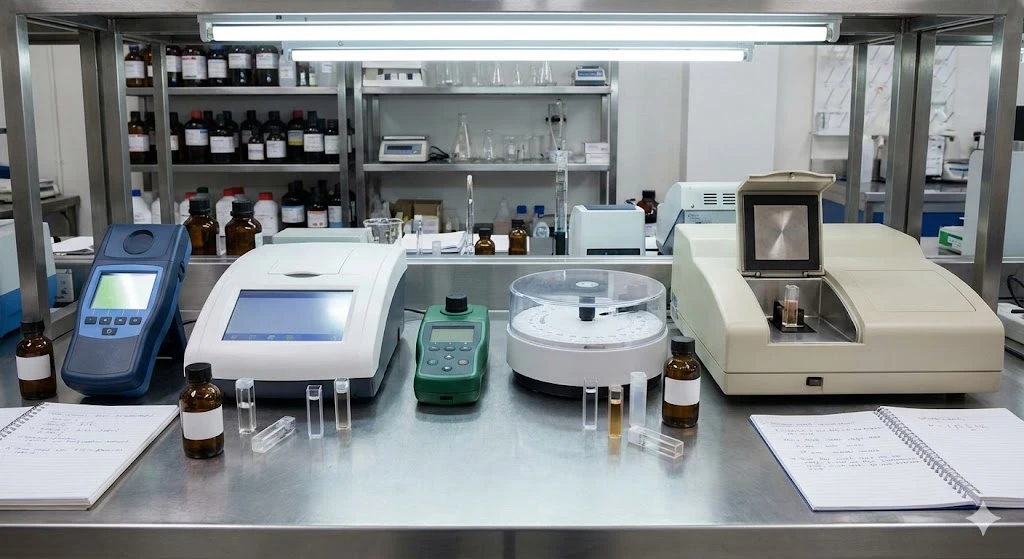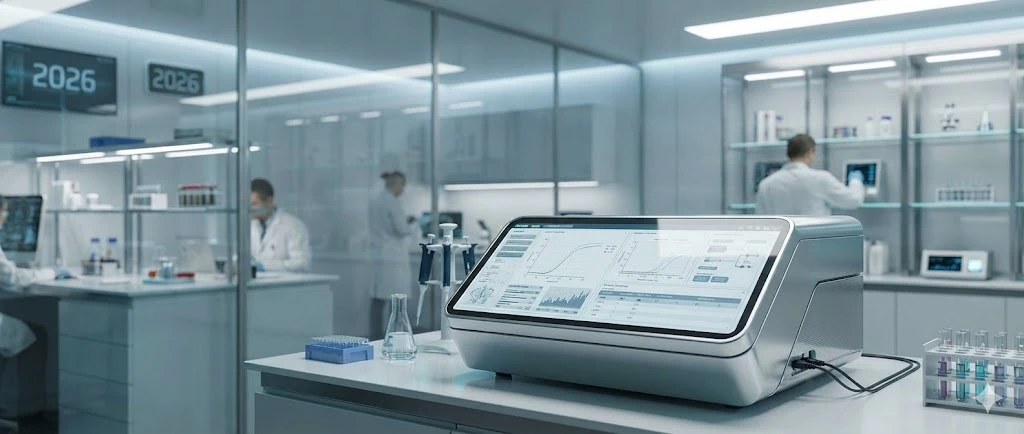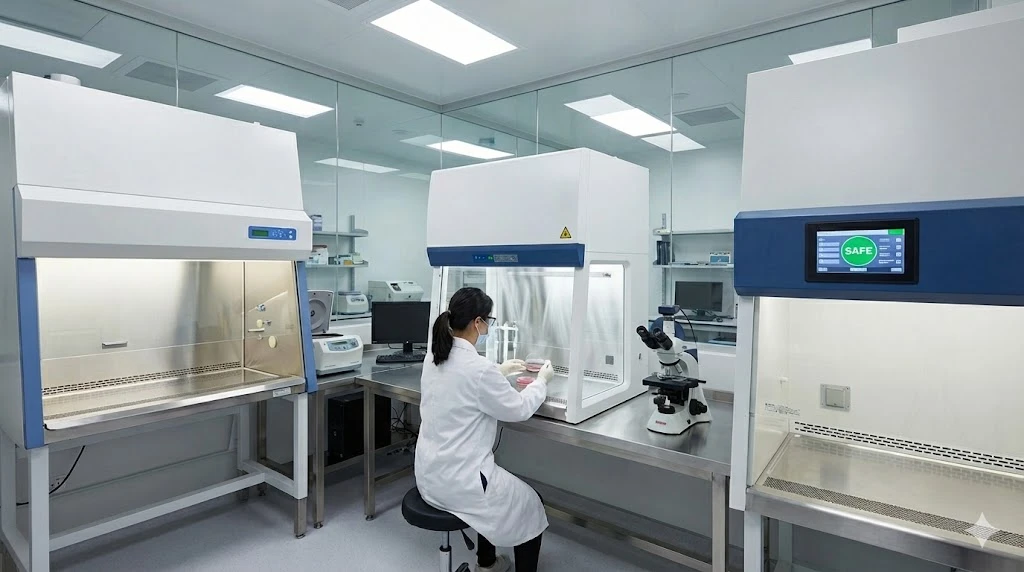Precision Syringe Pump Applications in Biopharmaceutical Drug Development
The two main stages of drug development involve largely different processes. Preclinical development forms both the foundation of a drug candidate’s potential and the forum for possible redevelopment of the candidate. Feedback from clinical development and clinical trials can either validate the clinical utility a drug candidate or force re-planning of the preclinical process. The preclinical stage requires precision instruments with high accuracy and performance in order to stratify the decision points of whether to scale-up and move on to clinical trials or not.
Preclinical Development and Syringe Pump Applications
The initial step of preclinical investigation typically involves primary screening of compound libraries in the search for hits and lead generation. In the case of biopharmaceutical discovery, the initial process may include screening of biomolecular libraries such as recombinant antibodies or enzymes, and primary assays focused on protein stability and activity.
Therapeutic Protein Characterization
Prior to testing, proteins must be purified from their biological source, whether recombinant expression system or native cells. Depending on stability and solubility, proteins may require denaturation and refolding, step-wise liquid or solid phase extraction, or other treatments prior to further purification. Techniques such as dynamic light scattering, ultracentrifugation, chemical titration can be used to delineate the chemical and physical stability of proteins, each of which requires accurate delivery of precise volumes of solution. Volume and temperature controlled delivery of solutions using programmable syringe pumps are suited for the range of conditions and the robustness required for analysis. This is particularly true in high-throughput screening processes where programmable and repetitive fluid delivery is crucial.
Protein Purification
Upon obtaining soluble protein in crude or enriched extract, the next step in the development process involves purification. The analytical system used will depend on the chemical and physical nature of the target protein -- small peptides and proteins may be isolated by HPLC whereas large polar proteins and protein complexes are usually better suited for FPLC. The nature of the target dictates the column, protocol, and fractionation conditions as well as post purification stability and storage.
Precision syringe pumps serve purposes in both the purification and analysis steps. HPLC systems require calibration and often standards testing prior to target isolation, both requiring precision volumes and microliter flow rates. The scale and volumes are larger for FPLC separations, however the requirements for precise fluid delivery can be the same – particularly during calibration of size exclusion columns and other precision methods.
Analysis of target protein purification typically involves high-performance testing platforms to ensure the target is intact, is folded correctly, and has retained the desired biochemical properties such as the presence of bound ligands or cofactors. This is true for membrane proteins as well, isolated from native membranes and subsequently reconstituted in lipid vesicles or micelles. Mass spectrometry, circular dichroism, fluorescence spectroscopy, electron parametric resonance, nuclear magnetic resonance, and other platforms all make use of precision fluid delivery systems, whether for calibration or protein analysis. This is true in particular for mass spec instrumentation, which may require daily calibration to maintain a high degree of precision for high throughput applications.
Protein Activity Assays
Upon purification, an initial step involves checking proper protein function which, depending on the protein, may involve: protein binding activity, enzyme catalysis, DNA/RNA binding, ion channel flux, and others. For this step, functional assays must be configured and run which may involve high throughput scale operation. Precision syringe pumps can play an important role in assays which involve continuous flow, stopped-flow, or perfusion of fluid through detection or reaction vessels. Examples may include: bimolecular interaction assays to measure binding and dissociation kinetics, stop-flow UV-vis or fluorescence spectroscopy to measure enzyme kinetics, or patch-clamp electrophysiological analysis of ion channels reconstituted into membrane.
These types of syringe pump applications translate to experimental activity assays which test the ability of the drug candidate to modulate protein, DNA/RNA, or cell function, and ultimately elicit therapeutic effects. In addition to playing a role in these activity assays, integrated syringe pumps will continue to function in concert with detection and quantification instruments, such as mass specs, downstream of the screening experiments. Depending on the scale of the assays, high performance syringe pumps can serve as critical components in microfluidic assays as well, which may require low volume pumping, precision flow rates, and syringe switching functions.
Secondary Activity Assays
Therapeutic protein candidates that demonstrate positive activities and the desired molecular effects are then subjected to secondary assays and screens to assess physiological activity and to rule out false positives. The role of syringe pumps in counter screens is straight forward, however, their involvement in bioavailability, toxicity, and metabolism assays entails use in a range of backgrounds, from cells and tissues to whole animal studies.
Depending on the indication and the potential drug type, programable syringe pumps may deliver fluid for precision applications such as liver hepatocyte toxicity or brain microdialysis, which may include continuous perfusion, drug administration, wash out, and other functions. In these settings, programmable pump function, reliable operation, and the ability to switch flow rates and syringes/solutions can be vital to the analyses. Results from these secondary assays are key to the advancement into the scale-up and clinical development stages – and the extensive resource and safety considerations that accompany this progression.
Therapeutic Protein Bioprocess Development
The next stage includes scaling-up production of the protein therapeutic candidate in order to perform large scale testing and clinical trials in animals and humans. In this context, high performance syringe pumps may play roles in continuous flow feeding and fluid delivery to bioreactors and separations equipment such as continuous flow dialysis and filtration devices. The ability to handle high pressure pumping and temperature control can be critical to a given bioprocess application.
Summary
Programmable precision syringe pumps serve roles in all stages of preclinical development. Continuous flow and stepwise functionality permit a range of applications in protein analysis and biophysical characterization. The ability to deliver precise sub-microliter to milliliter volumes supports their use for both analytical scale and preparative scale applications. Programmable features make these devices ideal, particularly for high throughput assays and quality control tasks. High-pressure pumping and temperature control features mean these pumps can be used at multiple steps of scale-up and bioprocess development.
This article was written by LabX and published in conjunction with Chemyx.
View Chemyx listings on LabX.com
Chemyx Inc. develops and manufactures microsyringe pump and high-pressure syringe pumps for a variety of R&D and manufacturing applications in biotech, pharma, chemical and oil & gas. Widely recognized for fluidic precision and innovative technology, the company is one of the market leaders in precision dosing, microfluidics, mass spec calibration and in related applications.
Chemyx syringe pumps are designed with advanced, highly durable materials that provide extreme laboratory precision at the best value to our customers. For more specific application requirements, Chemyx scientists also build custom units and can provide additional OEM manufacturing services that expand our customers’ offerings in the market.
A leader in innovation, Chemyx was the first company to develop the next-generation syringe pump with an interactive LCD interface and integrated syringe database. Today, Chemyx continues to push advancements in the laboratory services industry to facilitate and further the research of the world’s scientists, academics, and manufacturing companies.
